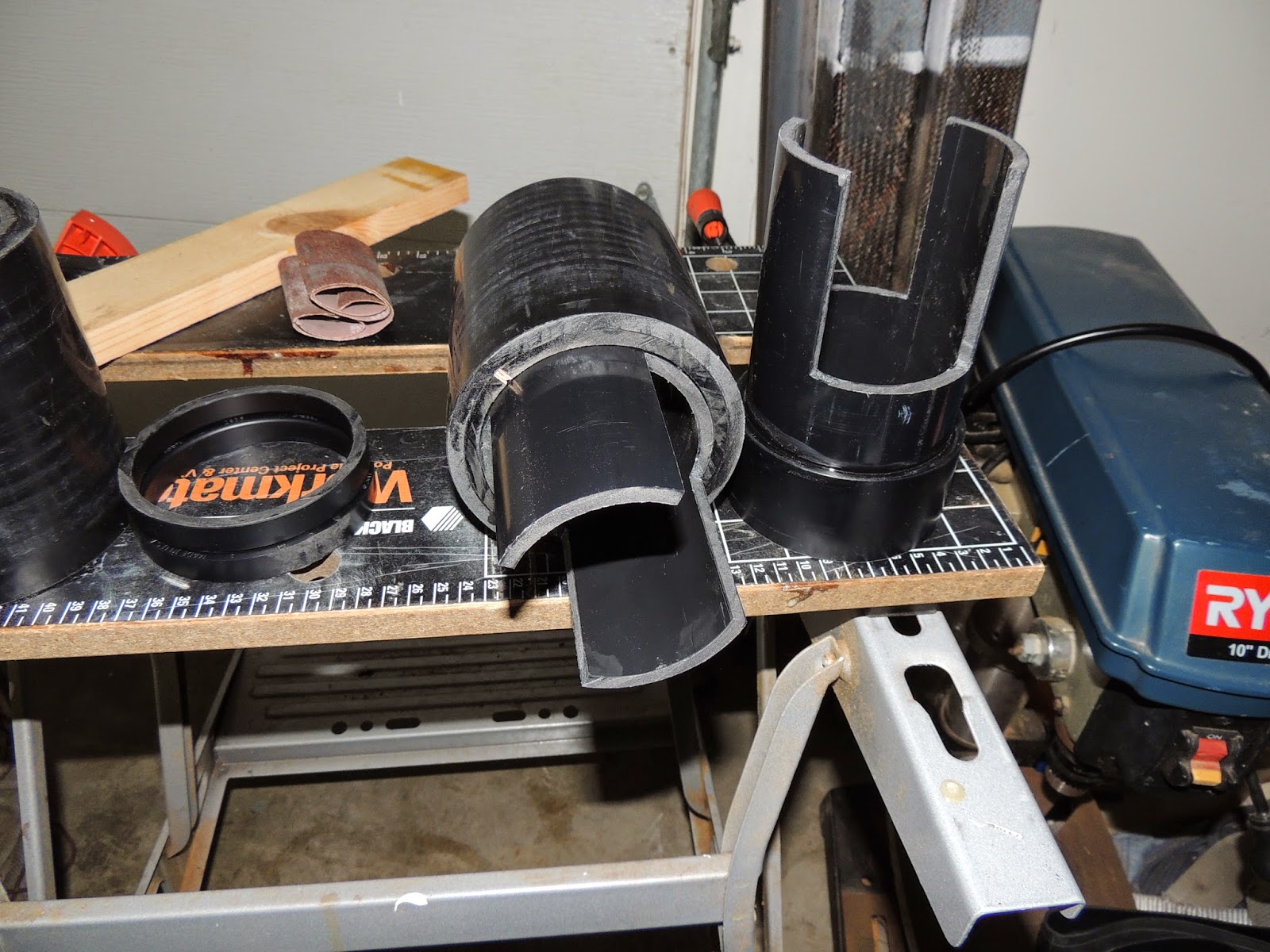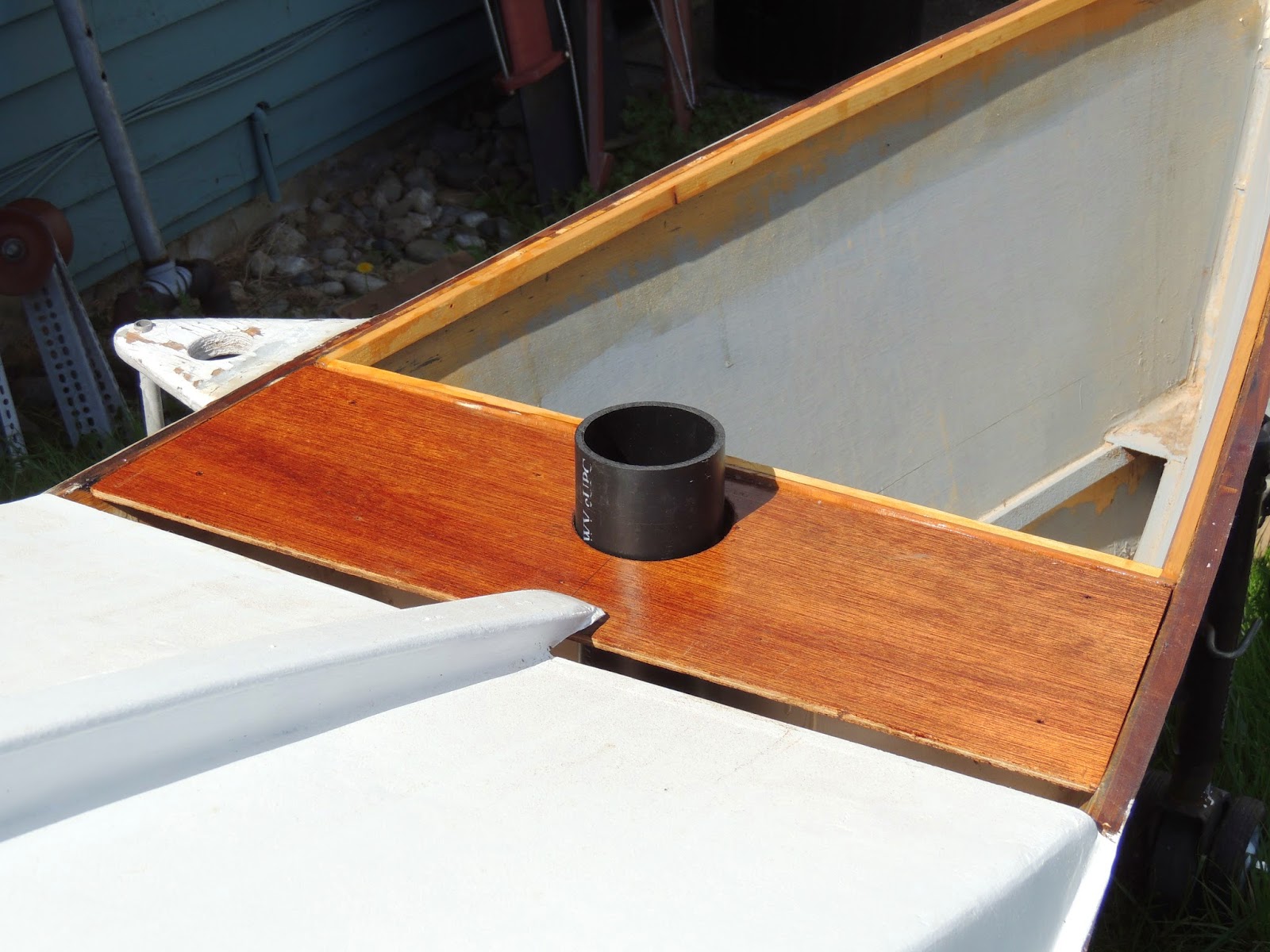I have been concentrating on the wing design and that is now finalised. Control of the wing and tail has been a challenge, but I have finally built a de-coupler that will set the angle of attack of the wing independently of the orientation of the hull.
The ama and half of the vaka have been sanded and painted with Glidden's white primer and sealer. I will use their Porch and Floor polyurethane oil paint for a top coat when the weather improves enough - I have to work outside!
Some pictures:
Starboard bow with the old deck removed
Removal of the bunks leaving a ledge for the new bunk to sit on
Port bow with the deck removed
De-coupler pieces awaiting assembly
Bunk area cleaned up and epoxy coated - note mast support lower hole at far end
Upper support for mast support tube
Mast support tube in place - yet to be epoxied in
Interior view - Mast support tube in place - one at each end
Aluminium wing tubes in the mast support tubes.
6061 T6 3 inch OD 1/8th wall thickness, 8ft long.
View of stbd wing tube
View of port wing tube with de-coupler fitted.
It will be clearer how it works once I have built the wings.
De-coupler on the aluminium wing tube.
The top part that I am holding is glued to the lowest wing rib so is at a fixed height but will rotate with the wing. It forces the upper part of the lower assembly to rotate with it.
The lower assembly can move up and down on the wing tube but only the top piece of it can rotate with the wing. The rest of it is to be attached to the mechanism that moves it up and down so as to actuate the bell crank in the wing that will alter the angle of the tail and the flap.
We will be moving to Florida during April and will be camping in a site near St Augustine. We have booked a site on the west coast of FL so as to be able to attend the messabout at Cedar Key during the first weekend of May. See you there!
















